 |
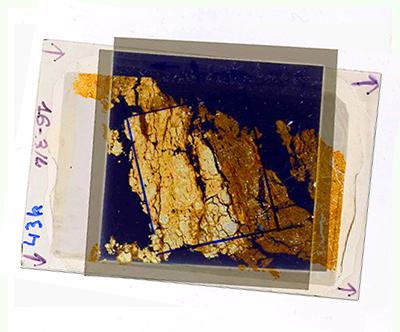 |
|||||
Low/medium magnifications |
Low/medium magnifications |
Contact between Bt and BCkt horizon in a Calcic Palexeral decapitate.
When the soil decapitates, the bottom of both horizon Bt and Ck adjust and the illuviation clay horizon invades the carbonate accumulation horizon.
Thin section RNS16-4. Limit Horizon between 2Bt3 and 2BCtk.
Micromorphological features
After browsing these images you should have found, at least, the following characteristics (left side image only with poloarizer, the one on the right side with crossed nicols).
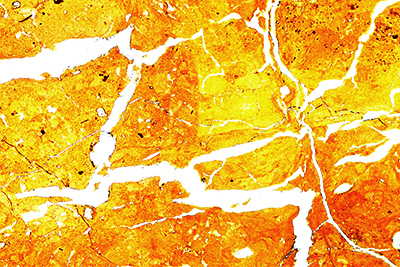 |
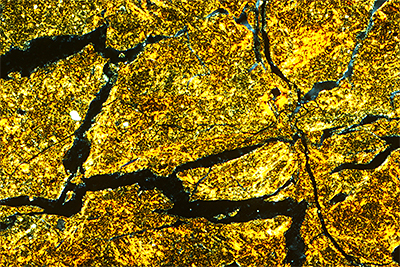 |
| Bt horizon. Almost all the clay has illuvial origin | |
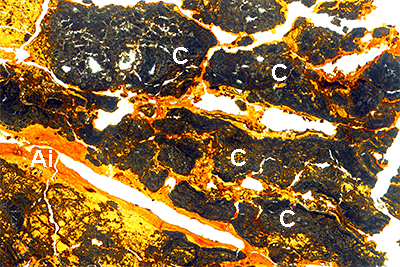 |
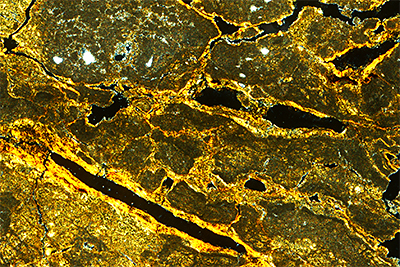 |
| Ckt horizon. Illuvial clay coating in a micritic carbonate plasma (calcite) | |
 |
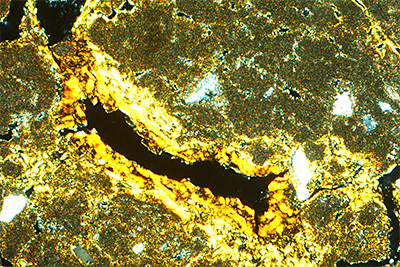 |
| Two fase illuviation clay. First, the yellow one, later the orage one, thus representing a change in the soil climate conditions. | |
 |
 |
| Composed coating over a pore. First, carbonates, second illuvial clay, third carbonates, four clay and finally carbonates again ( 5 changes in the soil conditions; and another additional showed in the yellow illuvial coating clay and the orange one on the upper area of the microscope field). | |
 |
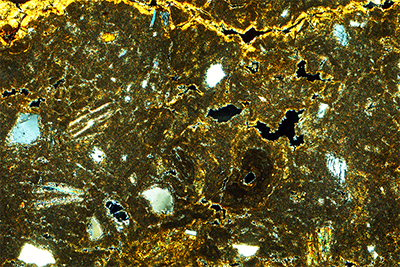 |
| Replacement of muscovite by the carbonates | |
Ai, illuvial clay; C, micritic carbonates |
|
Soil data
Morphology, physical and chemical analysis
Micromorphological images: Hor Ap Hor Bt1 Hor 2Bt2 Hor 2Bt3 Hor 2BCtk Hor 2CBtk comparative study
______________
This soil was presented in XIII Reunión Nacional de Suelos in Salamanca in 1985.